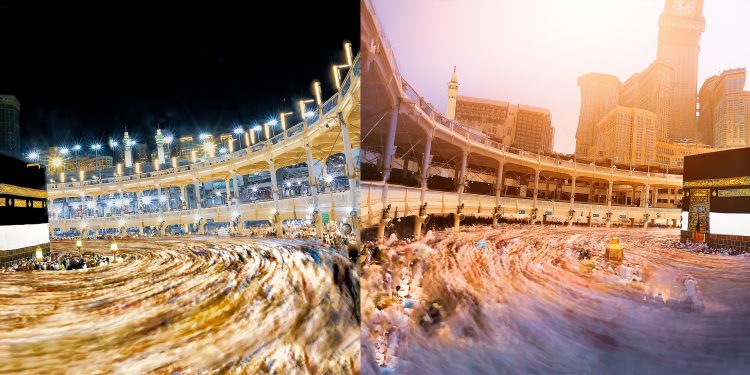Spanning over 14 centuries, Saudi Arabia’s pivotal role in Islamic pilgrimage has drawn countless faithful to its revered cities of Makkah and Medina. The yearly Hajj and the continuous Umrah pilgrimages are not just spiritual journeys but are also instrumental to the nation’s economic vitality.
The influx of pilgrims translates to an impressive financial boost, with religious tourism injecting approximately $12 billion annually into the economy. This sum constitutes a significant 20% of Saudi Arabia’s non-oil revenue and about 7% of its gross domestic product (GDP), funneling through various sectors such as hospitality, transportation, and retail.
The peak of activity occurs during Hajj, as Makkah and Medina become teeming centers of commerce. Devotees expend on accommodations, meals, and keepsakes, with local markets flourishing by offering traditional goods like dates, prayer rugs, and other religious paraphernalia. This surge in consumer spending bolsters local enterprises and generates employment opportunities.
Historically, the number of Hajj pilgrims reached 2.35 million in 2017, with international visitors accounting for 1.75 million. Umrah witnesses even higher participation, with 7.5 million people partaking in 2016. To cater to these masses, the government has made substantial investments in infrastructure, such as enlarging the Grand Mosque in Makkah and the Prophet’s Mosque in Medina, thereby increasing their capacity to host over two million worshippers.
Under the Vision 2030 initiative, Saudi Arabia aspires to exponentially grow its religious tourist numbers, targeting 30 million Umrah visitors annually by 2030, a significant leap from the current figures. Ambitious infrastructure undertakings, like the Haramain High-Speed Rail and a new section at King Abdulaziz International Airport, are pivotal to this expansion, simplifying pilgrim access.
Religious tourism’s advantages extend to fostering cultural connections and international goodwill, as it brings together individuals from diverse backgrounds. These interactions can fortify international relations and pave the way for new commercial ventures.
The country’s storied heritage of religious tourism not only contributes to its fiscal stability but is also a reliable revenue source, reinforcing the national economy independent of its oil riches. The perennial allure of Makkah and Medina ensures a consistent influx of pilgrims, offering a sustainable financial resource.
Furthering the scope of religious tourism aligns with Saudi Arabia’s strategic diversification efforts under Vision 2030. By investing in infrastructure, enhancing cultural attractions, and improving pilgrim services, the Kingdom is cementing religious tourism as a cornerstone of its economic prognosis.
In essence, religious tourism is a cornerstone of Saudi Arabia’s economic engine, providing a robust stream of revenue beyond its petroleum sector. The nation’s ability to attract millions of pilgrims annually underscores the lasting appeal of its spiritual and cultural legacy. With ongoing enhancements to its infrastructure, Saudi Arabia is poised to reap even greater economic rewards from religious tourism, ensuring its prosperity for future generations.


